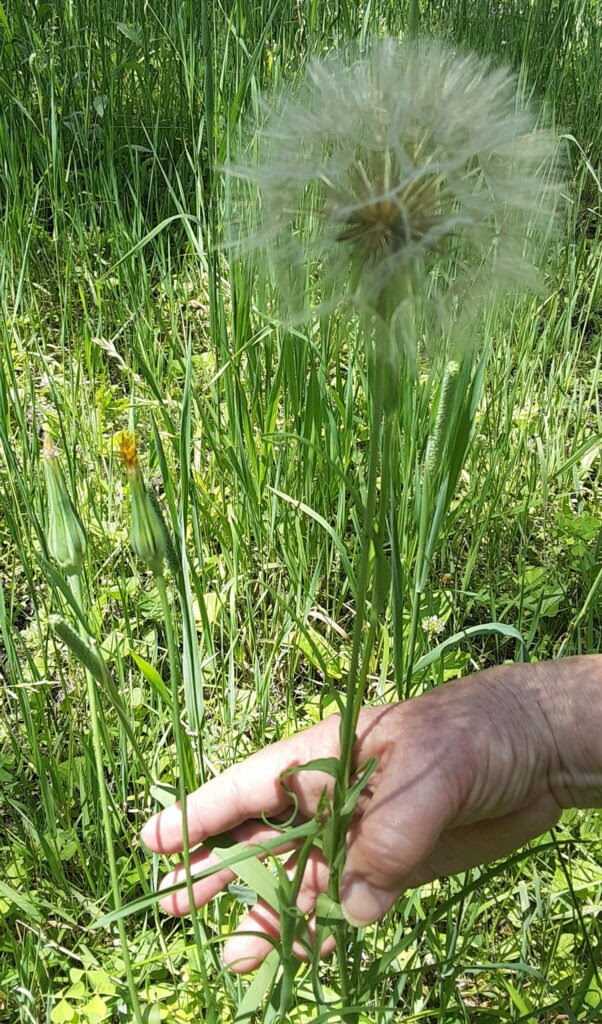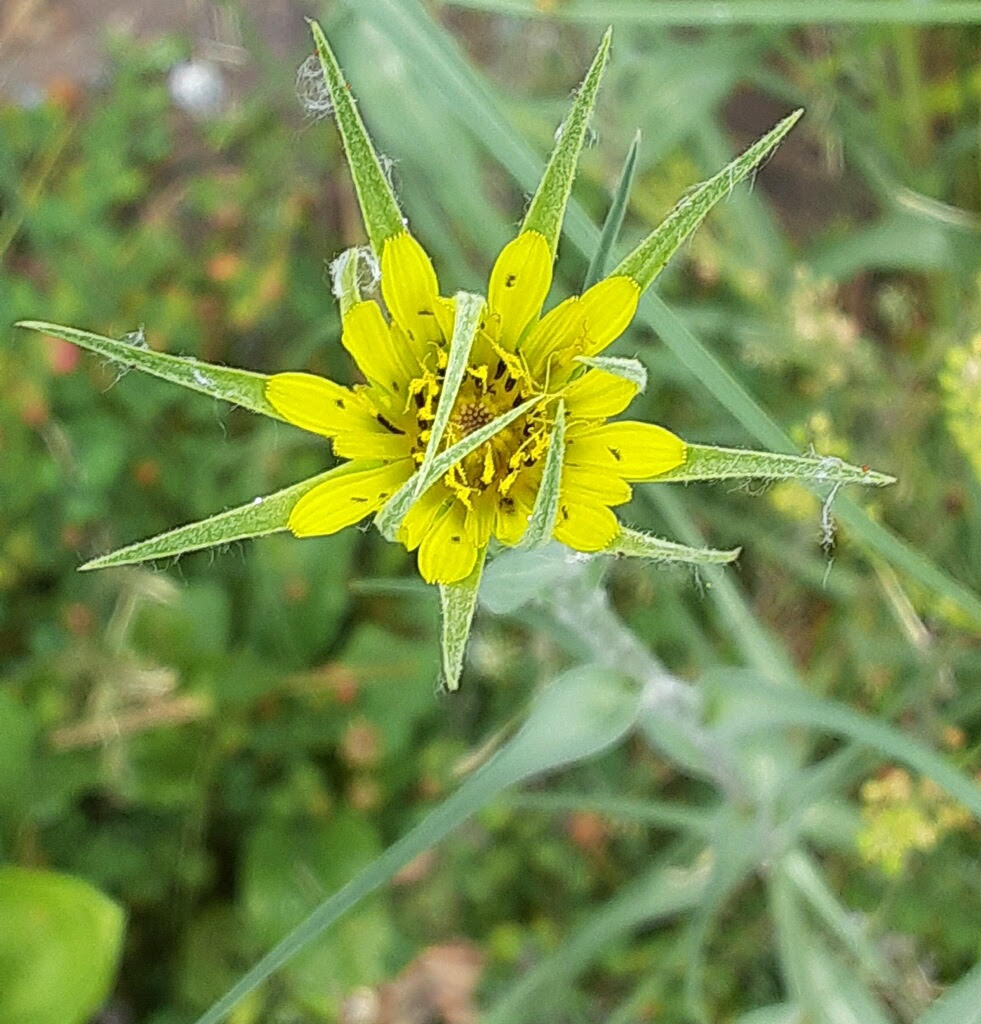By Susan Sprout
I just had to write about this particular plant, especially now, because it has started to set seed. Having often heard references to it on TV nature shows and personally, “Holy Cow! That’s the biggest dandelion I’ve ever seen”, I thought the plant should be correctly identified, given its due, so to speak. That big beige fluff ball of seeds was not made by a dandelion at all, but rather by a plant with the common names of Salsify, Oyster Plant, or Yellow Goatsfoot. Three common names, three different plants, all found living in PA, and sharing some or all of those common names. They are non-natives, probably brought here from Europe as food plants. The long, narrow, grass-like leaves are edible in salads or cooked. Their long, white roots grow straight down like carrots, and when boiled or baked and eaten, taste somewhat like oysters.

These three plants belong to the Aster Family for they all have composite flowers made up of tubular disc florets bunched in the middle with flatter, petal-like ray florets surrounding them on the outside. All are classified in the genus Tragopogan which is Greek for “goat’s foot”. The reason for that name may be because the thin, green bracts that grow beneath each single flower head are longer than the ray florets and stick out past them like a skinny triangle- shaped goat’s beard! Or it could be the fluffy, scruffy seed head.

How do you identify them? By the color of their flowers – yellow or pink. I have had trouble getting a decent photo of their flowers because they all close up by noon. The closed flowers may show a small flash of color at their tops. So, the yellow-flowered ones would be T. dubius and T. praetensis which flower from May to August. Both have similar height (2 – 2 1/2 feet tall) and flower width of two inches. They can grow for ten years before blooming and will then die off after. If you find a pink or purplish flowered one, it is the biennial T. porrifolius. They are taller than the yellow ones – up to four feet! Their two inch wide flowers bloom from May to July.

So, when you see some really big seed heads – up to four inches across – in fields, roadsides, waste places or in someone’s garden and they look like dandelions on steroids, REMEMBER – “Holy Cow! It’s Salsify (pronounced sal-sa-fee by our English ancestors)!


